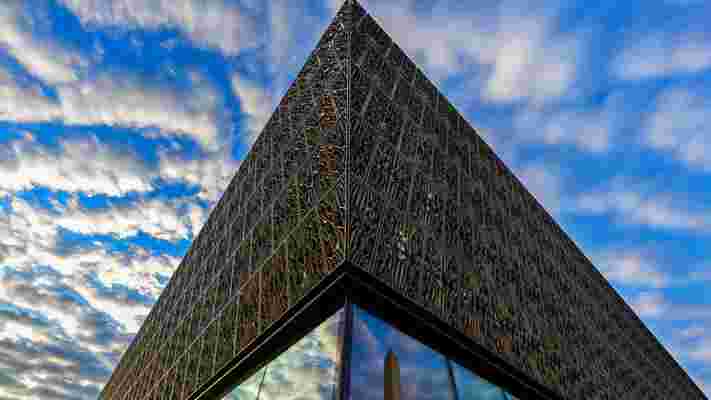David Adjaye On His Design for the National Museum of African American History and Culture
On September 24, the National Museum of African American History and Culture in Washington D.C., designed by Adjaye Associates , will open its doors to the public. The much-anticipated addition to the district was constructed on the last plot of available land on the National Mall. The bronze edifice will house exhibitions detailing the history of slavery, the post-abolition migration of African Americans as well as their contribution to American life today. Architectural Digest sat down with the building’s designer, David Adjaye, to hear from him in the days leading up to the grand opening.

Architectural Digest : For a high-profile project like this, which has been in the works for so long, how does it feel to see people experience the spaces?
David Adjaye: It’s just so exciting. The most exciting moment in architecture is when people use the building and it starts to seem intuitive. It’s the most thrilling moment.
AD : The museum is a singular project in so many ways, one for which you could not rely on the kind of architectural language that predominates in Washington, D.C. Can you comment on the relationship you developed between the meaning and architectural form?
DA: Well, it’s a narrative museum, and the architecture is using that narrative. The silhouette was important, and it was considered—absolutely considered. It’s a freestanding object right on the Washington Mall, and you can see it from all sides. That silhouette form is important in western and southern Africa, and it references the column heads of the architecture and shrines in precolonial Africa.
We also recognize that these African forms became incorporated into the classical architectural language. The Washington Monument, for example, is an obelisk, which is a form that made its way into the classical language from South Sudan and Nubia.
AD : But this isn’t an historicist building. Tell us about that outer skin, for example.
DA: That’s a reference to the early architecture of the American South. It references people like Philip Simmons, whose ironwork became part of the story of early American architecture. That, too, was part of the African American experience.
AD : As you’ve been watching people use the building, what are your impressions about the interior spaces?
DA: Now that there are people using it, it feels intuitive, very deliberate. We broke it into three areas: history, community, and culture. You come into a grand hall—it’s very democratizing. The lower levels address a very traumatic history, and these are dimly lit, cavelike spaces. Then, on the upper floors, there are areas that address community, or the making of a middle class, and culture, which includes arts, music, literature, and sports. This is at the top—it’s the most exuberant. On these upper levels, we frame views of the monuments. Those monuments, after all, are part of the narrative, too.